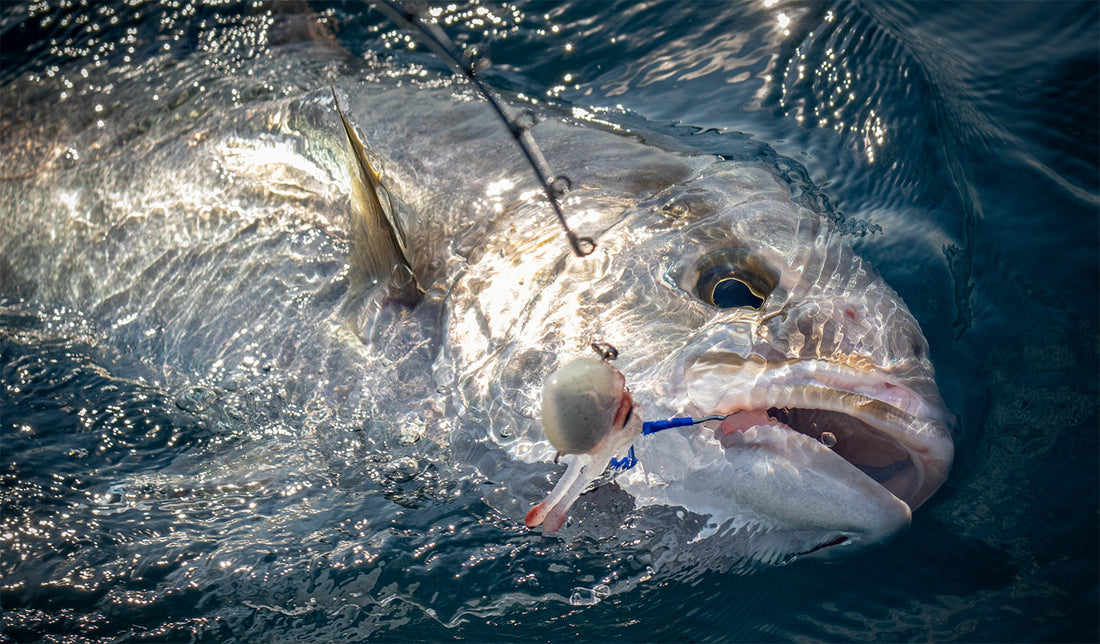Saltwater fish, particularly those within the drum family, which encompasses species like speckled and white trout, black drum, redfish, croakers, and the well-known Amberjack, are sometimes hosts to parasitic entities often referred to as spaghetti worms. For those unfamiliar with these parasites, the name might conjure up images of tangled pasta. In reality, these are thin, white worms that vary in length, often spotted during the filleting process.
Identifying Parasites
Though they might appear similar to the untrained eye, there are distinct types of spaghetti worms. For instance, Poecilancistrium caryophyllum is commonly found in sea trout, while Pseudogrillotia pIeistacantha is frequent in black drum. However, for simplicity, we'll collectively refer to them as spaghetti worms in this discussion.
The Amberjack, especially the Greater Amberjack, is recognized for its vulnerability to parasites. Often, spaghetti worms can be spotted in the flesh of this powerful game fish, providing another reason for anglers to be cautious during preparation.
Top 10 Saltwater Fish in the Atlantic Ocean Known for Parasites
The vastness of the Atlantic Ocean, with its diverse marine ecosystems, hosts a wide variety of fish species. While parasites are a natural part of marine ecosystems and play roles in maintaining ecological balance, certain fish species in the Atlantic are more commonly known to harbor them. Here's a list of the top 10:
-
Greater Amberjack: As previously mentioned, this strong-swimming fish is known for its vulnerability to a variety of parasites, including spaghetti worms.
-
Cod: A commercially significant fish, cod can sometimes be infected with parasites such as the cod worm, which is visible in its flesh.
-
Flounder: A flatfish that spends most of its life on the ocean floor, flounders can sometimes contain parasitic worms.
-
Haddock: Another commercially important fish, haddock is not immune to parasites, especially when dwelling in colder waters.
-
Swordfish: As top predators, swordfish sometimes accumulate parasites from the prey they consume.
-
Blue Marlin: Being a carnivorous species, Blue Marlin can be host to certain parasites.
-
Mackerel: This fast-swimming fish is known to sometimes carry roundworms and other parasitic entities.
-
Tuna: Various species of tuna, despite their high commercial value, can have parasites, making proper cooking and preparation essential.
-
Mahi-Mahi (Dolphin Fish): These colorful, fast-growing fish can also be hosts to certain parasites.
-
Red Snapper: A popular fish in the culinary world, Red Snappers can occasionally harbor parasitic worms.
It's crucial for consumers and fishermen to understand that the presence of parasites in fish is a natural occurrence and doesn't necessarily indicate the fish is unhealthy or unfit for consumption. Proper cooking and preparation techniques can usually ensure the fish is safe to eat.
Where to Locate the Parasites
For anglers, these worms often make an unscheduled appearance when they're preparing their catch. In trout, these worms are predominantly located just below the dorsal fin, at the heart of the fillet. Conversely, spaghetti worms in black drum and Amberjacks are predominantly situated closer to the fish's tail, with a typical specimen hosting around 5 to 15 of these parasites.
The Intriguing Parasite Lifecycle
The presence of spaghetti worms in trout, drum, and Amberjack is just one phase of their intricate life cycle. The worms in these fish are the intermediate forms of tapeworms that find their permanent residence in sharks. The journey starts with the eggs from an adult worm in a shark's intestines. These eggs, once released into the ocean, transform into swimming larvae named coracidium. These larvae need to find their way into a small marine crustacean, like a copepod, to metamorphose into the next stage: the procercoid.
The specifics of the next stage remain a subject of debate. Larger trout rarely consume creatures as minuscule as copepods. Moreover, younger trout, those under ten inches, seldom have these worms. This suggests another intermediate host, possibly a small baitfish like an anchovy, which first consumes the infected copepod and then becomes prey for the larger trout. Once inside the trout, the worm burrows its way into the flesh, where it can reside for many years. A shark consuming the infected trout completes this cycle, with the worm maturing in the shark's system.
Environmental Factors and Immunity
The prevalence of these worms in trout seems to be influenced by the water's salinity and purity. Higher infection rates are noted in saltier and cleaner waters, possibly due to the parasite or its intermediate host's affinity for such environments.
Interestingly, after a trout becomes a host to spaghetti worms, it appears to develop a resistance against further infestations. This could explain why older, bigger fish don't necessarily harbor more worms than their younger counterparts.
Culinary Implications
While the sight of a spaghetti worm might deter some from enjoying their catch, they pose no harm when consumed. Many anglers choose to remove them during the filleting process, which is a straightforward procedure. Others simply cook the fish with the worms, which become undetectable post-cooking.
In fact, a past survey at Mississippi fishing events revealed that less than a quarter of trout fishermen shied away from consuming worm-infested fish. Moreover, these worms don't pose a health threat to humans. There's no documented case of human infections, and experiments have shown that warm-blooded creatures can't be infected with this parasite.
While the spaghetti worms might be an unwelcome sight for some fishermen, understanding their lifecycle and harmless nature might alleviate concerns and allow for a more enjoyable fishing and culinary experience.

